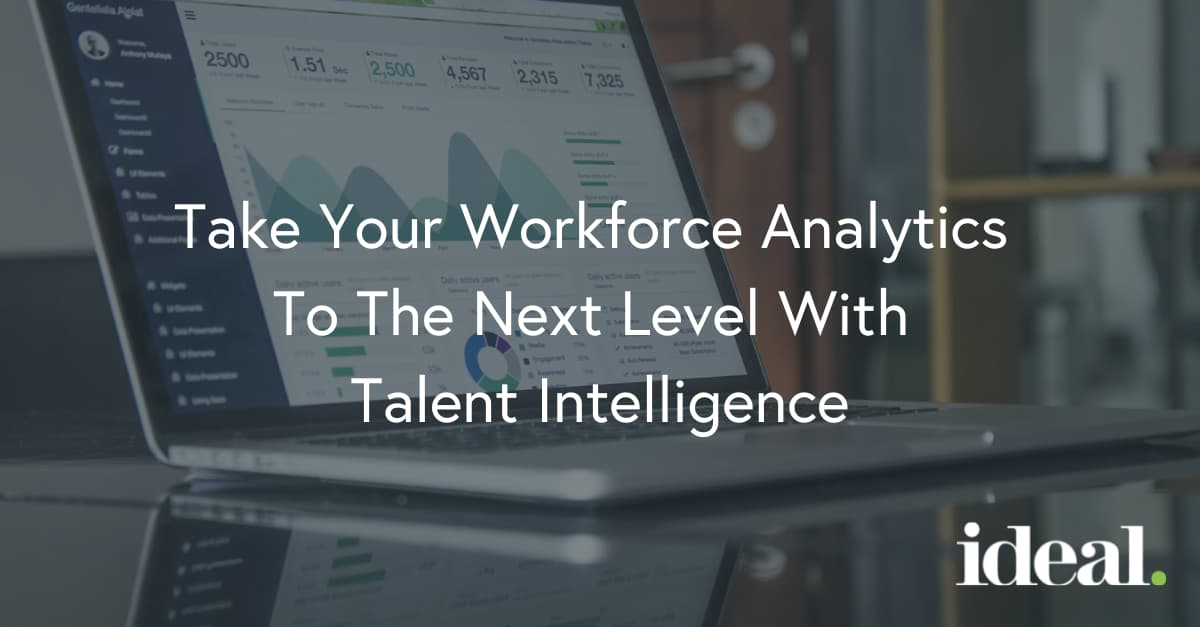
Organizations have access to more data than ever, and talent intelligence is the active agent in generating insights for more strategic workforce management. Gartner estimates HR can drive talent outcomes by up to 23% by improving its analytical capacity. It’s not surprising then that 70% of organizations expect to increase their investment in workforce analytics in the coming years.
The renewed interest in analytics is driven by two main factors. Our ability to collect and store vast amounts of data has dramatically increased with recent breakthroughs in computing power. This increase in data collection has resulted in the rapid adoption of automation and talent intelligence tools.
The logical next step is to leverage this data and technology to solve critical business challenges in HR and beyond. However, the global talent shortage is at an unprecedented high and one of the largest skills gaps in North America continues to be technical skills. With the right tools, HR leaders can quickly perform data analysis for digestible insights and focus their time on higher value strategic work into human capital management.
Here are some of the areas of HR that talent intelligence can elevate your workforce analytics for additional business value.
1. Recruiting analytics
Gartner’s data found recruiting is the area that analytics is being applied the most effectively to make talent decisions. 25% of leaders use HR data for sourcing talent and 10% use data to assess quality of hire. With talent intelligence, HR leaders can quickly asses new candidates based on past hires for a better chance of employees who perform better and stay longer at your organization.
Workforce analytics is especially strong in recruiting because this is the area of HR that’s also invested in AI to increase efficiency and effectiveness in their processes including automating screening and messaging in chatbot technology.
Another big area of investment in analytics for recruiting is in assessments to measure candidates’ skills and personality to quickly and accurately identify potential top performers. Both smart automation and candidate assessment are resulting in improved quality of hire in terms of performance and retention.
A new set of metrics that HR leaders are tasked with is increasing the diversity of their workforce. Hiring can play a large role in bringing new people from a variety of backgrounds and demographic groups. With talent intelligence and workforce analytics, HR leaders can see the diversity of their talent pool from initial screening to the interview stage and along every step of the hiring process to ensure they are in compliance with EEOC.
2. Reskilling analytics
58% of the workforce will need new skill sets to do their jobs successfully, according to Gartner. Data shows the total number of skills required for a single job has increased by 10% each year since 2017. That doesn’t even account for the one in three skills listed in the average 2017 job posting that are already obsolete now in 2021.
Reskilling can be a better choice from an economic standpoint, especially at scale. With talent intelligence, you can gain a better view of your existing talent pool’s current skills, including gaps that require retraining or external hires. You can then address your own internal skills gap by training and redeploying existing employees at lower cost to your bottom line than the lengthy and expensive hiring process. Reskilling is also an important part of the employee experience as employees are more likely to stay longer at programs with structured training programs and learning opportunities.
How is this measured? Data is being applied to the learning and development function by measuring the effectiveness of learning programs, iterate on programs to optimize investments, and communicate the business impact to stakeholders.
A growing area of learning analytics is network performance and learning, which is managing employees to deliver enterprise contribution rather than individual task performance.
3. Talent management
Talent management oversees the entire employee lifecycle. It is a process of attracting, developing, and retaining your people, also known as your organization’s greatest asset. In light of many conversations surrounding The Great Resignation and the War on Talent, organizations with a comprehensive view of their talent pool are able to be more agile in unpredictable times and tune their talent strategy to stay in line with business needs.
24% of leaders use analytics to improve employee performance and engagement from data sources include performance evaluations, employee engagement surveys, and real-time behavioural data such as emails. When done correctly, organizations are able to nurture their talent pool with a global view of employee skills and capabilities.
An innovative organization using workforce analytics for performance is Infosys. They reduced their attrition by assessing what the ideal experience, tenure, and requirements were for key positions and transferring employees who were unqualified for their current roles to other internal roles.
Coming back to our focus on increasing diversity in the workplace above. Talent intelligence allows HR leaders to measure the diversity, equity, and inclusion of the people within their organization. This allows HR teams to create actionable policies based on the data already in their systems.
There are multiple areas to focus on with talent intelligence and workforce analytics, whether it’s employee retention, improving the diversity of your workforce, or succession planning for the future of your organization. Data-driven decisions are important for making more accurate, efficient, and fair talent decisions, especially for enterprise organizations with a global workforce. Keep pace with your competition with talent intelligence into your workforce analytics.
